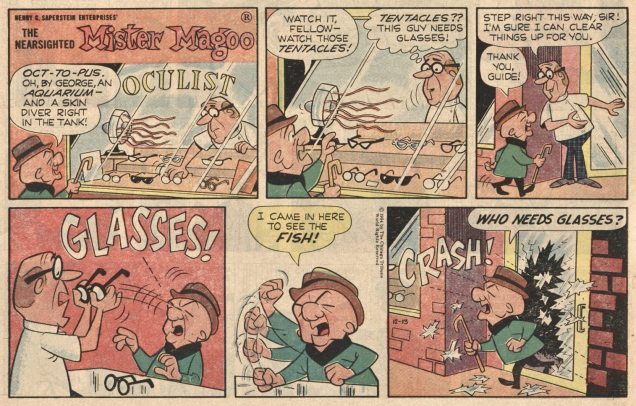I’d like to talk about a book that’s coming out in October -“The Iron Duchess” by Roger Langridge. There’s two reasons to be excited about it: it’s a solo Langridge project; and it features Fred the Clown, a favourite character of many a R.L. aficionado. This graphic novel was initially self-published about a year ago, but Fantagraphics (displaying their usual impeccable taste) has picked it up since then, so it’s now commonly available through major stores.
But, you may ask, who is Fred the Clown and why should you care? Instead of blabbing incomprehensibly as I’m prone to doing when talking about Langridge (imagine a dog trying to explain its excitement about a juicy bone – there’s just going to be a lot of tail-wagging and drooling), I prefer to quote the back-cover blurb from the first Fred the Clown collection (equally highly recommended, published in 2004 also by Fantagraphics):
“Existential clown comedy as you like it.
SEE! Fred the Clown get slapped regularly in his single-minded pursuit of l’amour!
HEAR! The screams of his lady friends from several blocks away!
SMELL! Fred the Clown’s scientifically improbable collection of fungal infections!
The signature creation of cartoonist Roger Langridge, Fred the Clown is the thinking man’s idiot. Fred has an eye for the ladies, as well as several other organs, but the only part of themselves they’re willing to share with him is a carefully placed kneecap…
Fred the Clown’s misadventures are a curious balance of bleakness and joyful absurdism; the universe may dump on Fred from a great height, but he never gives up. More often than not, they involve the pursuit of a lady—any lady will do, it seems, but bearded ladies are at the top of the list.”
Just look at this striking art and Langridge’s impeccable sense of timing:


To which I can add that I normally can’t *stand* clowns, and Fred is the only cartoon clown whom I not only tolerate but whose antics I actually enjoy.

But to get back to the Duchess: *this* story doesn’t have bearded ladies, but it does have a (very) mad scientist, a damsel in dire and completely improbable peril, enough twists in the plot to make you yelp (and giggle) out loud (great for embarrassing yourself in public!), and heart-warming inter-species friendship, perhaps even romance. After all, there is a train involved; a train means somebody can be tied to the railroad tracks, or a couple can escape – or not – an evil father… I love people who can take a conventional story and run off with it while still “obeying” all the rules of the genre.

It’s exciting, riveting and really funny. Did I mention the beautiful art, expert shading, etc., etc.? Just pick it up already. Langridge can deftly illustrate anything his freaky brain comes up with, which includes animals (especially horses, which most comic artists seem to struggle with), ugly people (ditto – it seems that artists often can draw either pretty people, or grotesque ones, but rarely both)… and he’s great at architecture and perspective, too.

In an ideal world, Langridge would have free rein – and enough financial support – to draw the stories that are clearly close to his heart, instead of being forced (although he’s very gallant about it) to write for projects illustrated by pencillers/inkers so impressively inept that these comics, that should be excellent just by virtue of having a fantastic writer, become completely unreadable. Let’s at least take things one step closer to this ideal by adding the Iron Duchess to our comic book collections.

Don’t forget to visit Langridge’s Hotel Fred, his official website, where you can purchase original art, books, and also see lots of goodies like sketches, commissions, unpublished pages, and whatever else he’s got lying around.
~ ds






